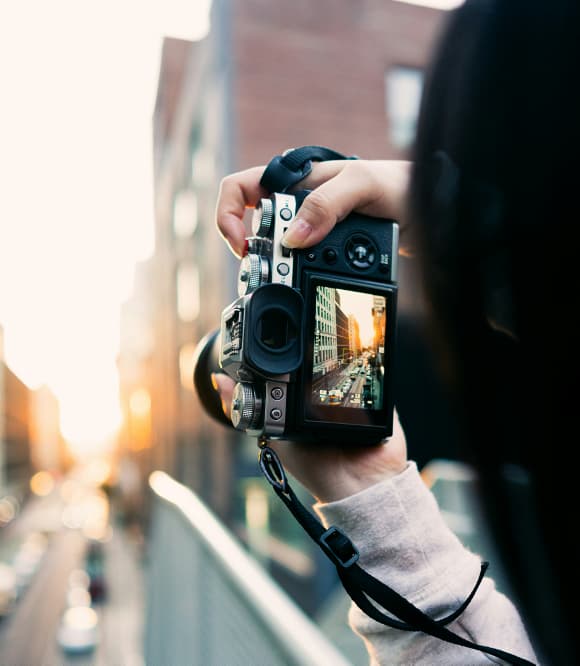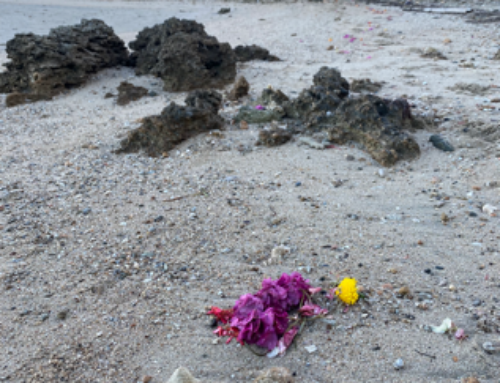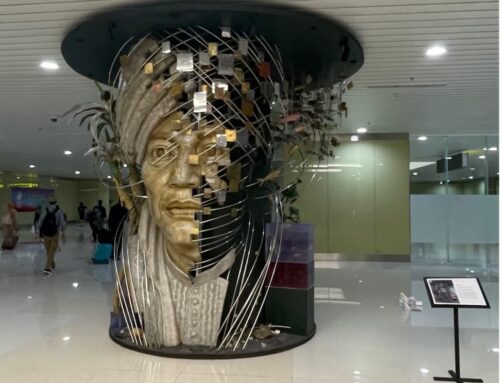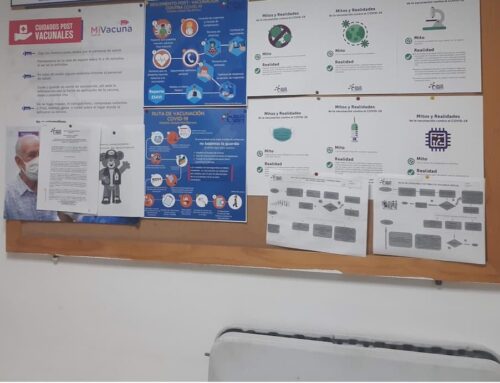
Photo by Yang Yu on Unsplash. Collection cover photo by Glenn Carstens-Peters on Unsplash.
Anthropologists pride themselves on the intimacy of the ethnographic method. To family, friends, and colleagues, we speak proudly about how we train our social intuition and observation skills to “pick up” on subtle details, often missed by others. We write eloquently about the changing rhythms of the city, landscapes of difference, horizons of possibility, and the production of meaning and hope—the ineffable and immaterial conditions of human life worlds. We are especially trained to embody liminal spaces and produce knowledge that cannot be captured solely through demographics, cartographies, or archives. The ethnographer’s vulnerable liminality, intimate encounters, and detail-oriented observations validate anthropological understandings of society and culture.
As well-practiced as our intuitive, physical, and phenomenological methods may be, we nevertheless wonder: What can a camera lens, perhaps an errant photo on our phones taken during a field encounter, offer our ethnographic practice? In this collection, we invite anthropologists to reflect on a picture saved in their fieldwork archives that prompts new research directions, lines of investigation, and analysis previously unformulated. What specific details within the photo—or the context of the photo’s capture—break open anthropologists’ current frames of analysis vis-à-vis their respective field sites? How does the camera lens mediate between photographer, subject, audience, and time to enable something “new”? What does it mean to consider a photo to be not just an illustrative supplement to in-depth, in-person embedded fieldwork, but also a method that produces ethnographic knowledge and anthropological insights?
We the editors, Christina Kefala and Ipsita Dey, are newly minted PhDs in Anthropology. Christina conducts digital ethnography on China’s social media platforms and researches the reconfiguration of whiteness in China. Ipsita studies how Indo-Fijians articulate connections to land and country through agricultural practice, claiming a complex mode of diasporic nativity in response to resurgent Fijian indigenous ethno-nationalist politics.
One thing we share is that we are both grappling with the question of how photography might give voice to our research. Photography for both of us was a form of visual engagement and documentation that complemented our notes and textual data, capturing nuances that were challenging to convey through words alone. It was a way to document the lived reality of our fieldwork and assist us in remembering key moments or events, but it was also much more than that. Photos may help ethnographers establish and maintain relationships with interlocutors and research communities (Collier and Collier 1967; Gariglio 2023). Photos may also help us see what might otherwise remain hidden. Canal (2004, 29) writes that “photography is an ideal medium for reconstructing the imaginary sphere and the invisible process of social realities we are researching.” From this point of view, approaching photography ethnographically may be less about the original intention of the photographer or the formal aesthetic qualities of the image, and more about the context of the photo and the knowledge and meaning it coveys. Photographs do not just represent reality—they also shape and even construct it. The meanings conveyed in and through photos may elude or exceed verbal or textual communication, and as such may be ripe for ethnographic analysis.
Photography, then, might form the basis of our methodological practice as ethnographers and provide the groundwork for our theories. Inspired by the age-old saying, “A picture is worth a thousand words,” this collection asks anthropologists who have conducted fieldwork in different parts of the world to each offer one photo from their archive, along with a 1000-word reflection on how the photo challenged them to revisit their field site and approach their ethnographic experience from a new theoretical or epistemological perspective.
This collection reflects upon issues raised by photography and the use of photographs in ethnographic research, in all their complexity and ambiguity. It is a collection that transports the reader—by way of the anthropologists’ camera lens—to fieldsites around the world in order to consider how a “click” might unlock new perspectives on our fieldwork experiences. Mythri Jegathesan revisits a picture taken in 2008 at the Ceylon Tea Museum in Kandy, Sri Lanka, which prompts her to delve into the country’s plantation patrilines. Willy Sier returns to a photo—taken during her PhD fieldwork research in Wuhan, China in 2015—that inspires her to recall the intimate relationship between her interlocutors, a mother and a daughter. Sier charts in her text the life paths charted by her participants after the photo was taken. Jerome Whitington’s photo of solar panels, taken during his fieldwork stay in Central Laos in 2004, illustrates the social and ecological transformations that stemmed from energy transformations that took place in the village. Elise Berman takes her photo depicting two children (the author’s son, together with the daughter of a Marshallese immigrant) as the starting point for analyzing ideologies of difference and images of similarity encountered by the children and the anthropologist alike. Emily Ragus, in collaboration with visual artist Alexandra Rose Howland, took a photo as a part of their art and research collaboration. They show the intimate relationship between Durban’s urban ruination and the interaction of human bodies with the surrounding environment. Maurizia Mezza’s photo, which captures a board covered with posters about COVID-19 vaccination, was taken during her fieldwork research in a hospital in Cali, Colombia. The objects in the picture, as the author explains in the text, became necessary materials for analyzing the narratives and practices of Cali’s public health system during the author’s fieldwork, which took place during the pandemic. Khidir M. Prawirosusanto’s image shows a mixed-media statue artwork called Palihan, located in the Yogyakarta International Airport in Indonesia. Taken during fieldwork in 2023, Khidir explains that the artwork symbolizes the local history and people of Palihan village, which was relocated due to the airport’s infrastructural needs. The image opened up for Khidir new directions for research in the rural-urban transformations, and Palihan as a part of the aetropolis zone. During her involvement with digital ethnography, Christina Kefala captures moments of digital self-making by taking selfies. Photography supported her fieldwork to create an ethnographic triangulation between her own position, her photographic images, and reality, and thus a means to visualize herself during research. Ipsita Dey offers a photo of flower petals on a beach in Fiji, describing how the flower petals form the shape and trace of an ocean wave even as the water disappears into the sand. These daily shifts of the landscape, she argues, make space for shifting identities – where indigenous ethnonationalist politics otherwise suffocates Indo-Fijian claims to belonging.
For anthropologists, ethnography and photography offer opportunities not only for academic and personal growth. They allow researchers to immerse themselves in diverse environments, broaden their perspectives, and develop valuable observation, documentation, and analysis skills. While this group of essays and images addresses different ethnographic stories, there is a common thread: a commitment to raising awareness of injustice and articulating the nuances of ethnographic knowledge production.
References
Canal, Gemma Orobitg. 2004. “Photography in the field: word and image in ethnographic research”. In Working Images. Visual Representation in Ethnography. Sarah Pink, László Kürti, Isabel Afonso. London and New York: Routledge.
Collier, J., and Collier M. 1967. Visual Anthropology: Photography as a Research Method. Albuquerque, NM: University of New Mexico Press.
Gariglio, Luigi. 2023. “On fieldwork in the hybrid field: A “methodological novel” on ethnography, photography, fiction, and creative writing. Qualitative Research, Vol 0 (0): 1-13
Christina Kefala is a PhD candidate at the University of Amsterdam in the Anthropology department. She is a digital ethnographer whose research focuses on foreign entrepreneurs, businesses, and brands in China to consider constructions whiteness and gender, digitization, consumerism, and artificial intelligence.
Ipsita Dey recently graduated from Princeton University with a PhD in Anthropology and a Graduate Certificate in Environmental Studies. In Fall 2024, she will begin as an Assistant Professor in the Comparative History of Ideas Department at the University of Washington, Seattle. Her research focuses on indigenous politics, indentured labor diasporas, and plantation afterlives in Fiji.




